Fresh carrots and celery are the most-used vegetables in my kitchen, but they can be tricky to keep fresh for a long time without proper storage. These simple tricks will keep them fresh and crispy with the best flavor for weeks! Here’s how to store carrots and celery (both cut and whole).
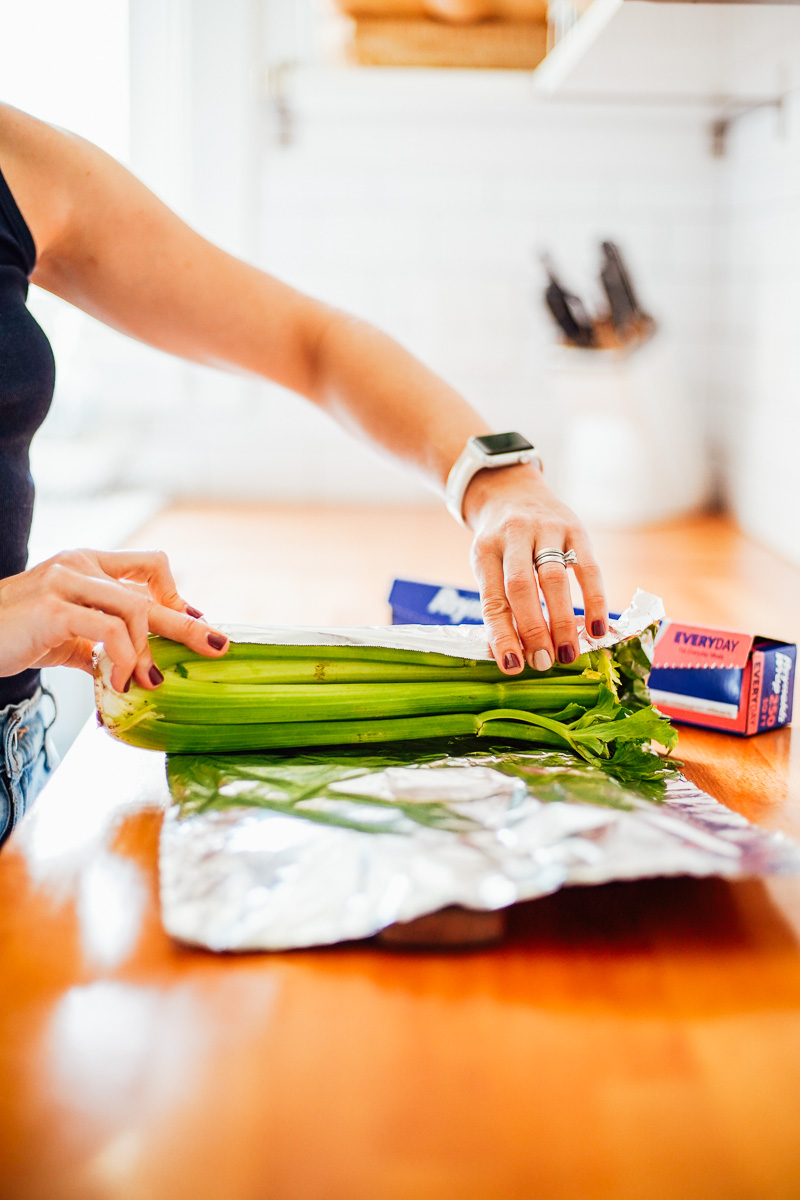
Want to Save This Article?
Enter your email & I’ll send it straight to your inbox. And you’ll get new recipes & tips each week.

Why Do Carrots and Celery Go Limp?
Here’s everything you need to know about storing carrots and celery the right way to get the best results and avoid food waste and save money.
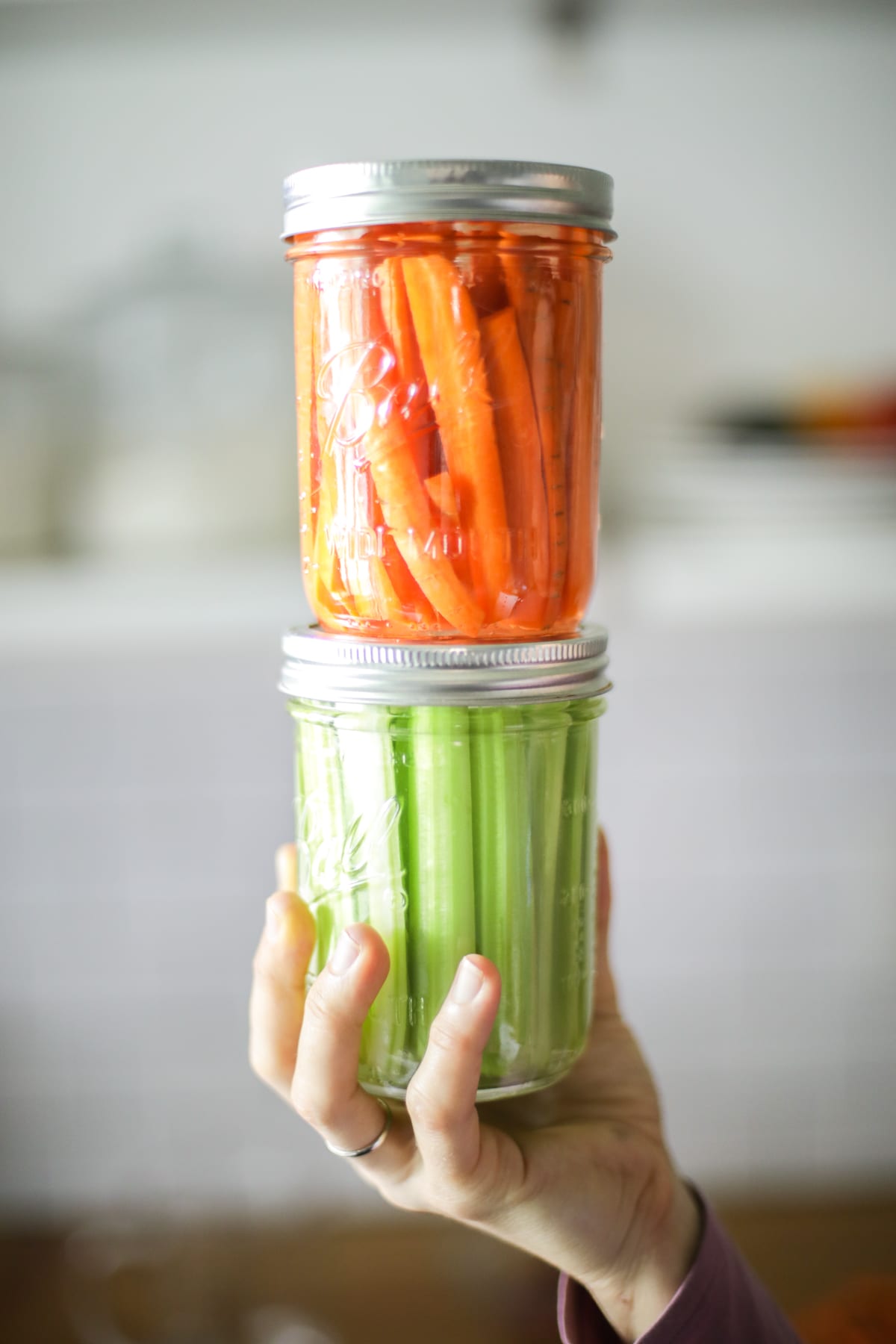
How to Store Cut Carrots and Celery (Video & Steps)
Tips to Remember
- Cut celery and carrots store best in a container of water.
- No need to wash the carrots or celery before storing.
- This easy method is a great way to prep the celery and carrots so the veggies are ready for snacking. I also love making a side of ranch dressing/dip.
- Step 1: Cut carrots and/or celery into sticks: If the whole carrots have carrot greens/tops attached, cut the tops from the carrots to remove them from the carrot root. The green tops may be used to make pesto (use 1/2 basil, 1/2 carrot tops) or discard. Also remove any celery leaves. Cut the carrots and/or celery ribs into the desired sizes: carrot slices, sticks, coins, etc. The veggies need to fit inside your container of choice.
- Step 2: Add carrots and/or celery to jars: Add the carrots and/or celery to mason jars or storage jars (anything works). I’ve found that wide-mouth mason jars work well for “sticks” since the pieces stand up in the jars.
- Step 3: Fill the jar(s) with cold water and cover the carrots and/or celery in a water bath. Secure the lid(s) on the container(s).
- Step 4: Store the carrots and/or celery in the fridge: Store the jars in the fridge for up to 2 weeks. Discard and replenish the water in the jars every few days.
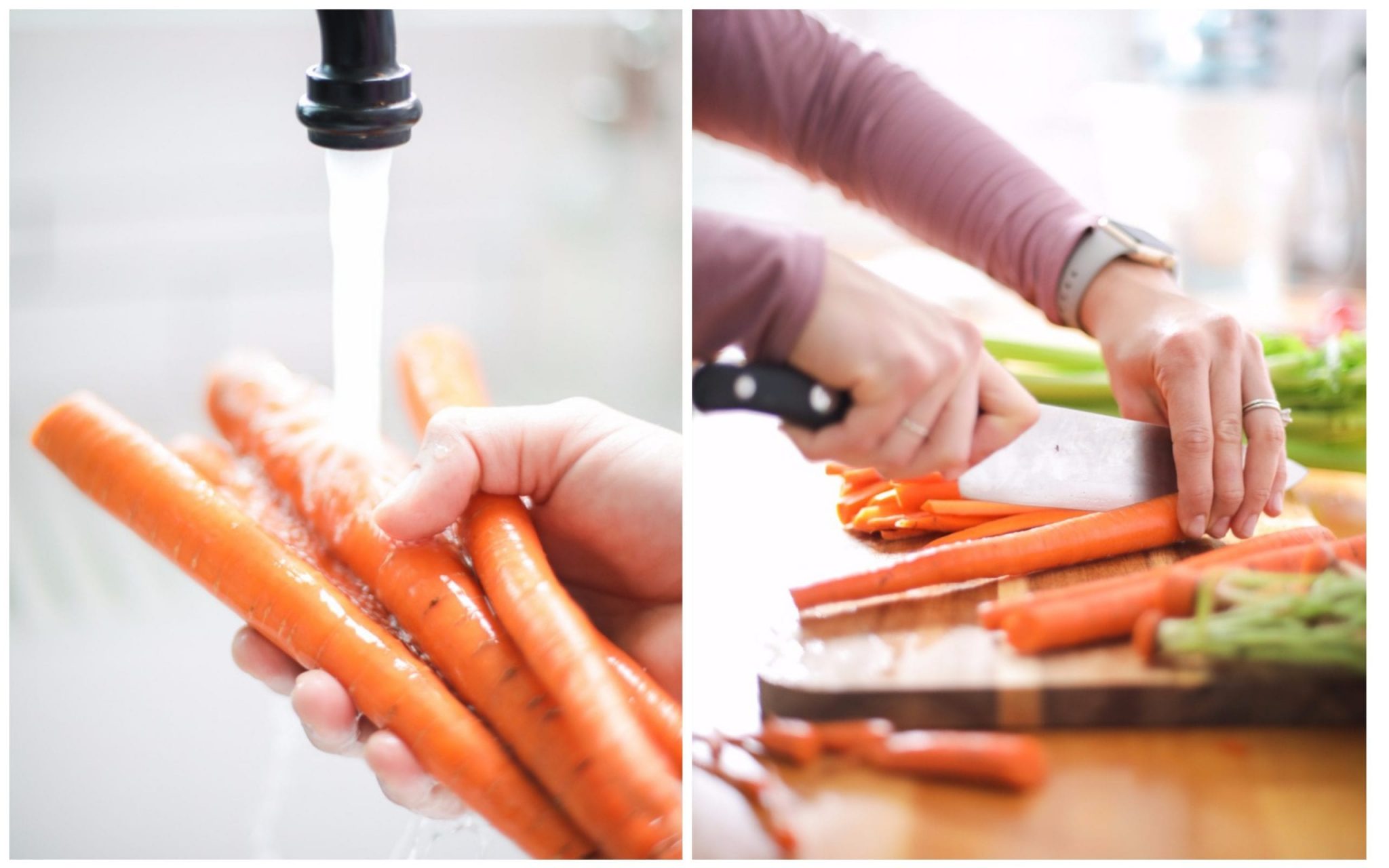
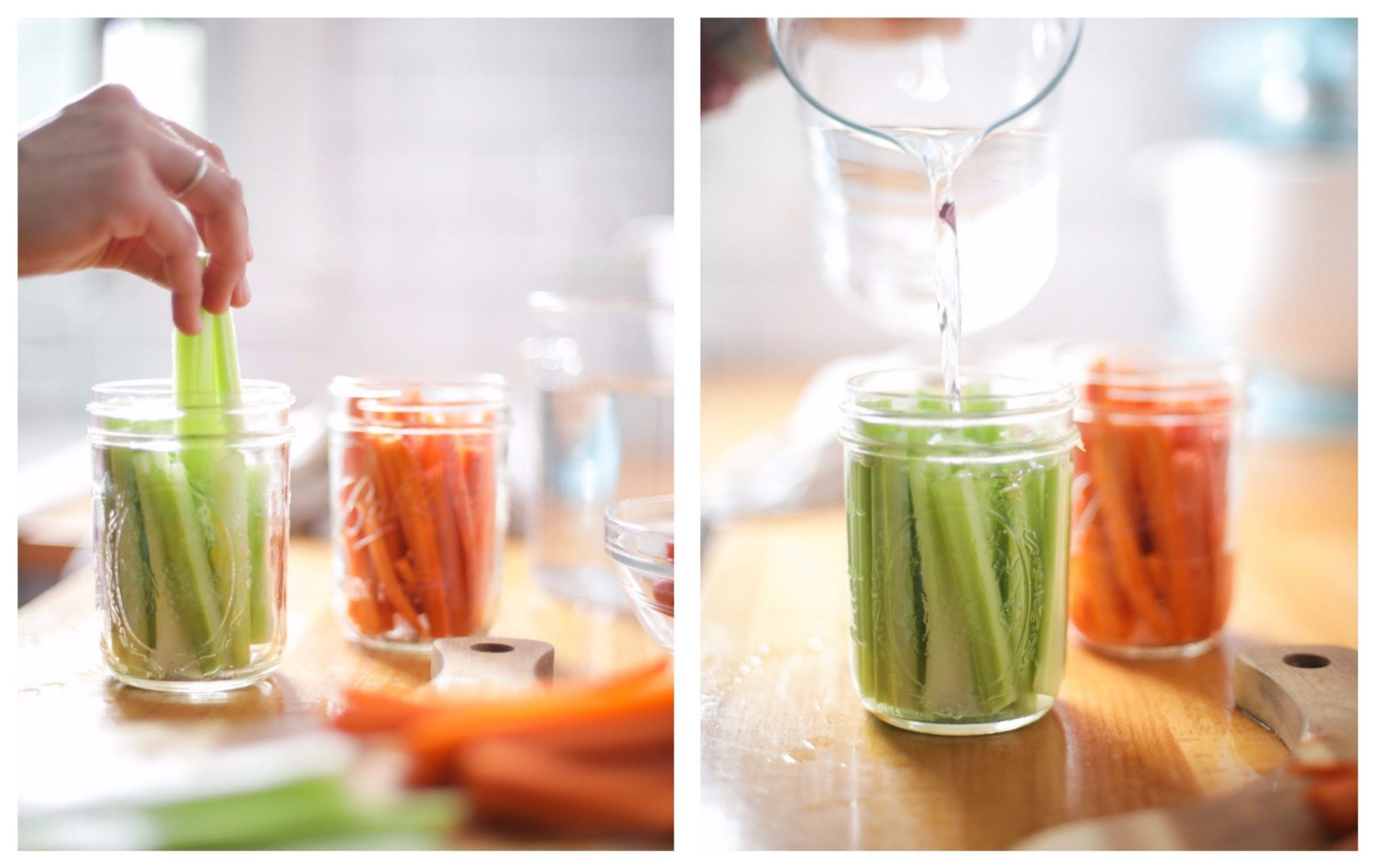
How to Store Baby Carrots & Keep Them Crunchy
Baby carrots are notorious for drying out. To keep the carrots crunchy and moist, here’s how to store them for a few weeks…
Baby Carrot Storage
- Place the baby carrots in a large storage container.
- Pour water over the carrots, so the carrots are fully submerged.
- Add a lid or skip the lid (your choice).
- Place the container in the fridge and store the carrots for several weeks. Discard and replenish the water every few days to keep everything fresh and avoid bacterial growth.
How to Store Whole Unpeeled Carrots
There are various methods, from the moist sand method to using a root cellar (a basement space, which is great for long term food storage).
But my preferred method is to use the plastic bag method. Using this method, carrots will last several months in the fridge. Yes, a short period of time, but unless you have a huge bushel of carrots and need long-term storage, this method works great.
Unpeeled Whole Carrot Storage
- Place the (unwashed) carrots, with the tops removed from the root vegetable, in a large plastic bag (like a gallon-size freezer bag).
- Seal the bag.
- Store the airtight bag in coolest part of the fridge (usually the back of the fridge).
- This will keep the carrots fresh for weeks, and even months at a time.
Helpful Tips
- No need to wash the carrots before storing.
- Don’t peel the carrots before storing.
- Some people like to wrap all the carrots in a paper towel before placing in the bag to capture the moisture that can build up over time (or just line the bag with a paper towel). I haven’t found this necessary, but you’re welcome to do so if you find moisture builds up on the bag over time causing rot on the carrots.
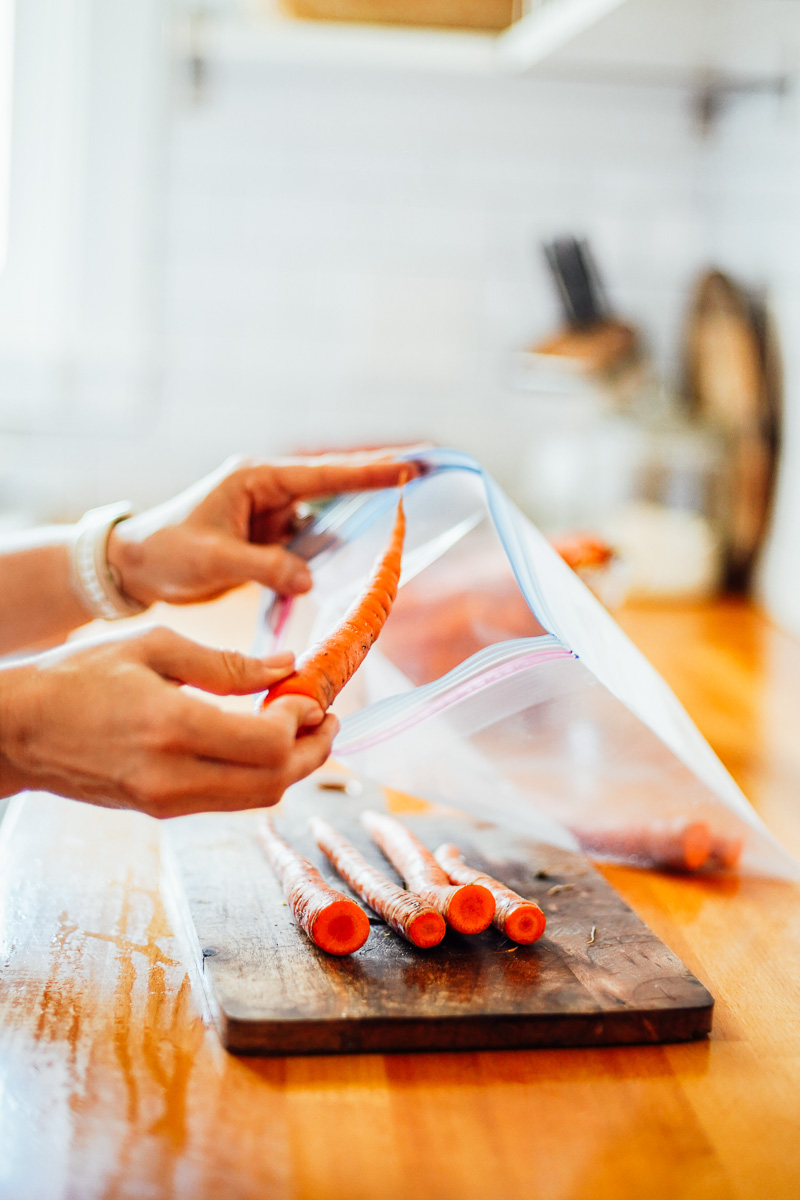
How to Store Whole Peeled Carrots
Since peeled carrots no longer have a protective peel (which keeps them from drying out), here’s the best way to store them…
PS: This also works for storing unpeeled carrots, if you don’t want to use the bag method above.
Peeled Whole Carrot Storage
- Place the whole, peeled carrots in a large container.
- Pour water into the container. The carrots should be mostly submerged in the water. There’s no need to add a lid.
- Place the carrots in the fridge.
- Change the water every few days for freshness.
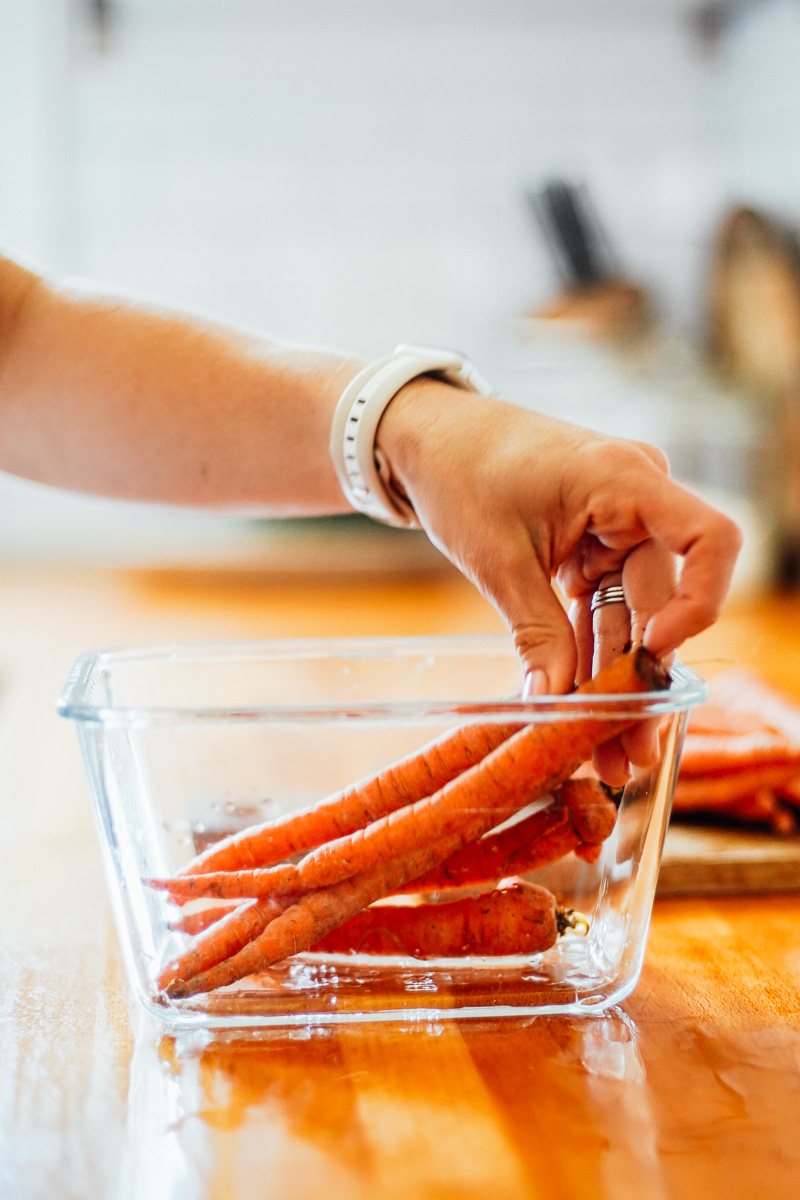
How to Store Whole Celery
The easy way to store whole celery is to…
Whole Celery Storage
- Wrap the celery, with the root still attached, in foil. No need to wash the celery first.
- Place the wrapped celery stalk in the crisper drawer of the fridge.
- As you need celery ribs, remove the foil, peel or cut off as many ribs as needed, then return the celery to the foil wrap.
- Celery will last for about a month (or longer) when stored this way.
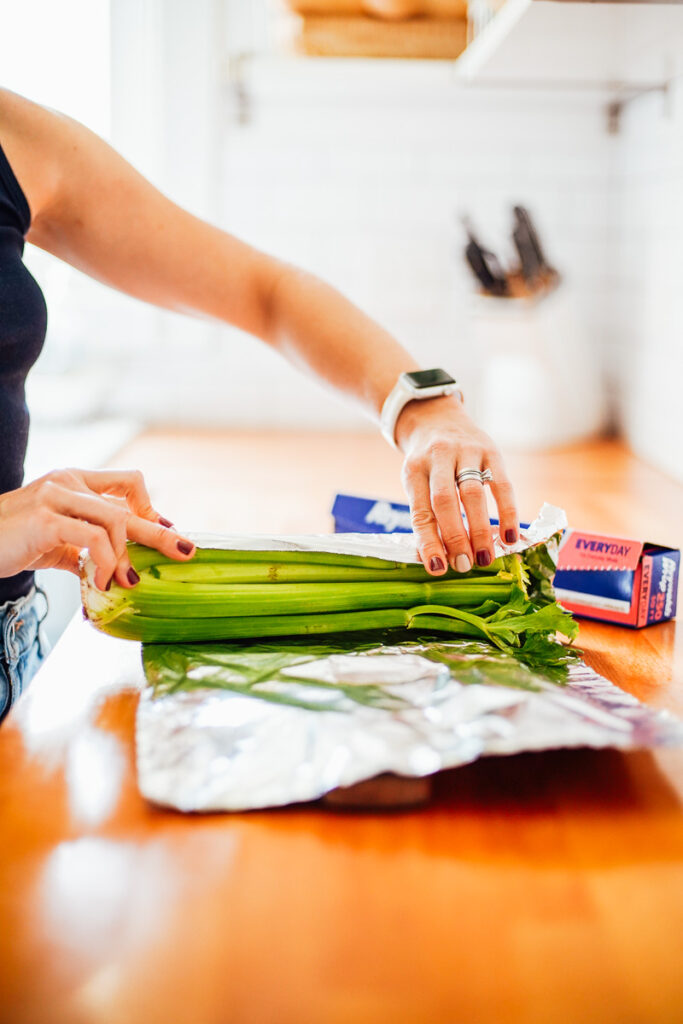
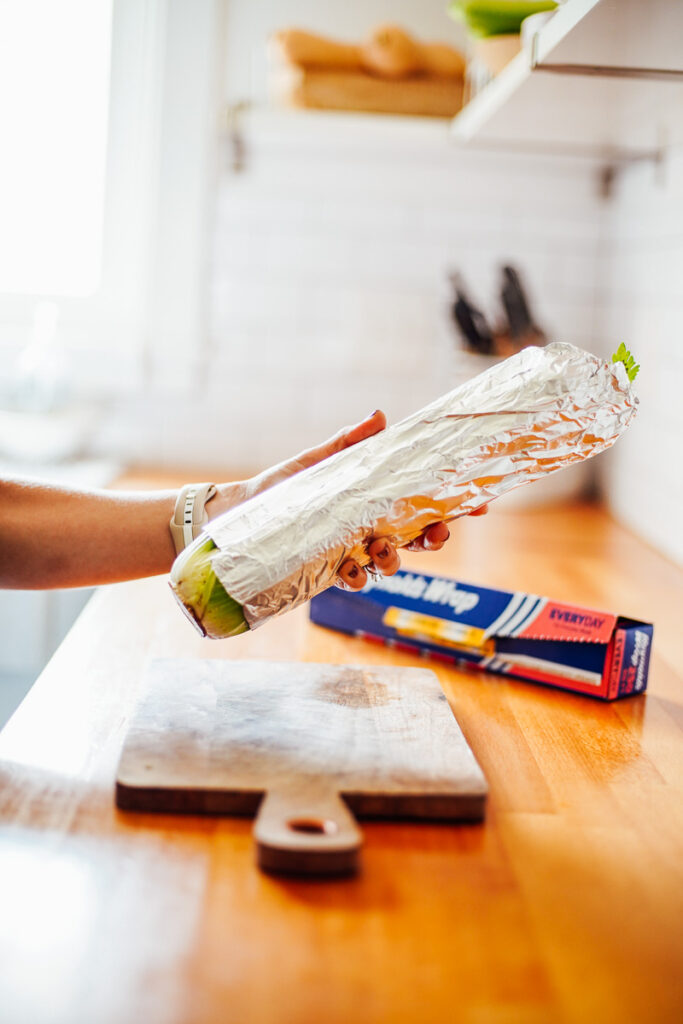
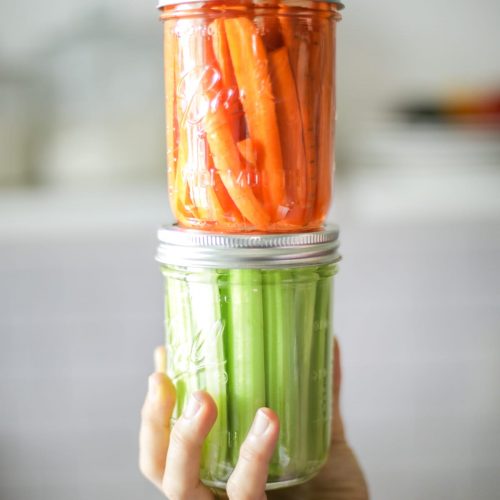
How to Fresh Store Carrots & Celery (Cut & Whole)
Ingredients
Cut Celery or Carrots Storage
- 1 quart-size mason jar or storage container of choice
- water
- carrots
- celery
Whole Unpeeled Carrots Storage
- 1 gallon-size storage bag
- unpeeled carrots this method does not work with peeled carrots
Whole Peeled Carrots Storage
- 1 large storage container
- water
- peeled carrots (this method also works with unpeeled carrots if you prefer not to use a bag)
Whole Celery Storage
- 1 piece foil
- 1 celery stalk (whole celery)
Instructions
For Cut Carrots and Celery
- Cut the carrots and/or celery ribs into the desired sizes: sticks, coins, etc. I recommend storing the carrots in one jar and celery in another jar.
- Add the carrots and/or celery to mason jars or storage jars. I’ve found that wide-mouth mason jars work well for “sticks” since the pieces can stand up in the jars.
- Fill the jars with water. Secure the lids on the jars.
- Store the jars in the fridge for up to 2 weeks (or longer). Change the water every few days to keep things fresh.
For Whole Unpeeled Carrots:
- Place the (unwashed) carrots, with the tops removed, in a large plastic bag (like a gallon-size freezer bag).
- Seal the bag.
- Store the airtight bag in coolest part of the fridge (usually the back of the fridge). This will keep the carrots fresh for weeks, and even months at a time.
For Whole Peeled Carrots:
- Place the whole, peeled carrots in a large container. (This method also works for unpeeled whole carrots if you prefer not to use the bag method.)
- Pour water into the container. The carrots should be mostly submerged in the water. There's no need to add a lid.
- Place the carrots in the fridge. Change the water every few days for freshness.
For Whole Celery:
- Wrap the celery stalk, with the root still attached, in foil. No need to wash the celery first.
- Place the wrapped celery in the crisper drawer of the fridge.
- As you need celery ribs, remove the foil, peel or cut off as many ribs as needed, then return the celery stalk to the foil wrap. Celery will last for about a month (or longer) when stored this way.
Video
Notes
Don’t let it rot!
FREE PRODUCE GUIDE
21 Storage Hacks to Keep Your Produce Fresh
How to Use Carrots
There are so many different ways to use carrots. From a side dish to a snack. Here are a few of my favorite ways…
- A salad: Chop, dice, or peel into ribbons using a veggie peeler. Add to a leafy green salad.
- Snack: Serve with hummus or ranch dressing/dip (this is one of my kids’ favorite snacks or lunchbox sides).
- Fermented Carrots: One of my favorite snacks and so good for your gut!
- Roast Them: Roast up the carrots on their own or with green beans for a side dish.
- Slaw: Add shredded carrots to a slaw for tacos.
- Soup Base: Make a mirepoix; a combo of chopped celery, carrots, and onion-the base of any good soup!
- Carrot Muffins: Add shredded carrots to muffins. I love these gluten-free carrot muffins or einkorn muffins.
- Cake Carrot: I love this einkorn carrot cake.
- Stock/Broth: If your carrots are limp, or you just want to make something delicious with crisp carrots, make veggie broth or chicken broth for soups.
How to Use Celery
Celery also has many different uses. Here are a few of my favorites:
- A salad: Chop or dice celery ribs for a salad. You can also add the leafy greens.
- Snack: Serve with hummus or ranch dressing/dip.
- Soup Base: Make a mirepoix; a combo of chopped celery, carrots, and onion-the base of any good soup.
- Stock/Broth: Use the ribs to make a veggie broth or chicken broth for soups.
- Celery Soup: A delicious soup to serve alongside a sandwich or quesadilla.

FAQs
Produce Storage Tricks

Take a Peek Inside My Fridge: Take a tour of my fridge and see all my storage hacks for saving money and keeping produce fresh.



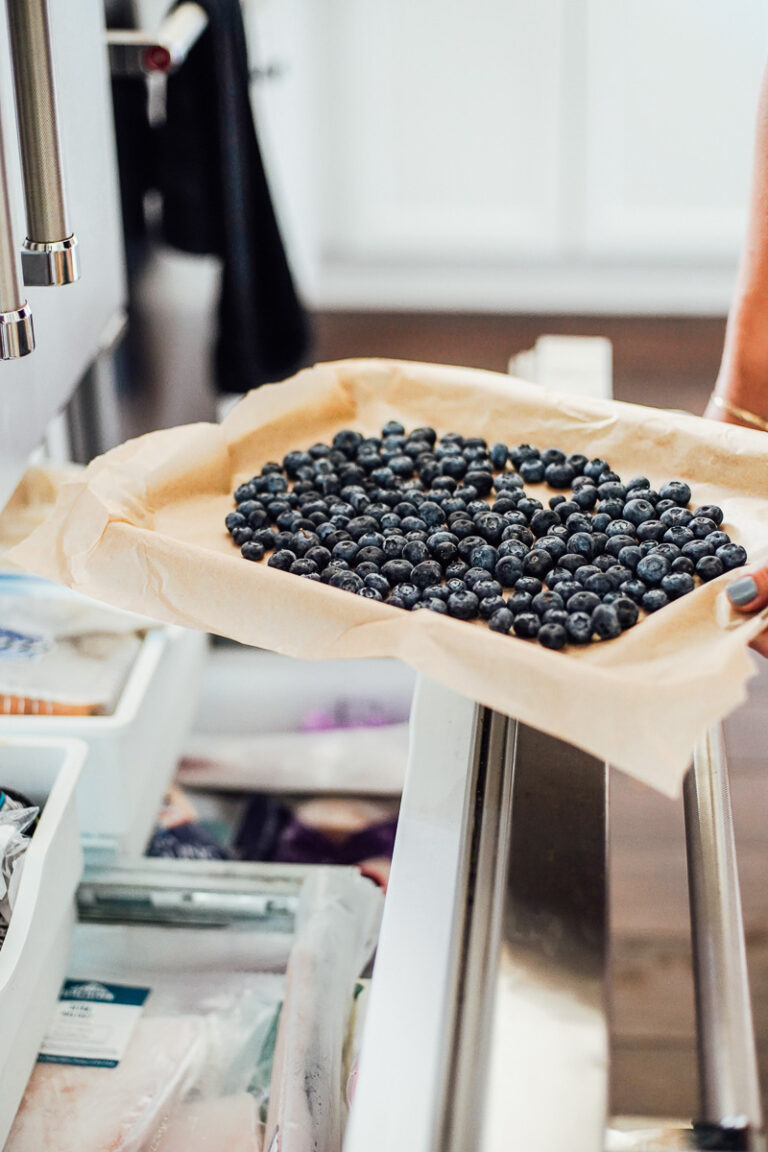
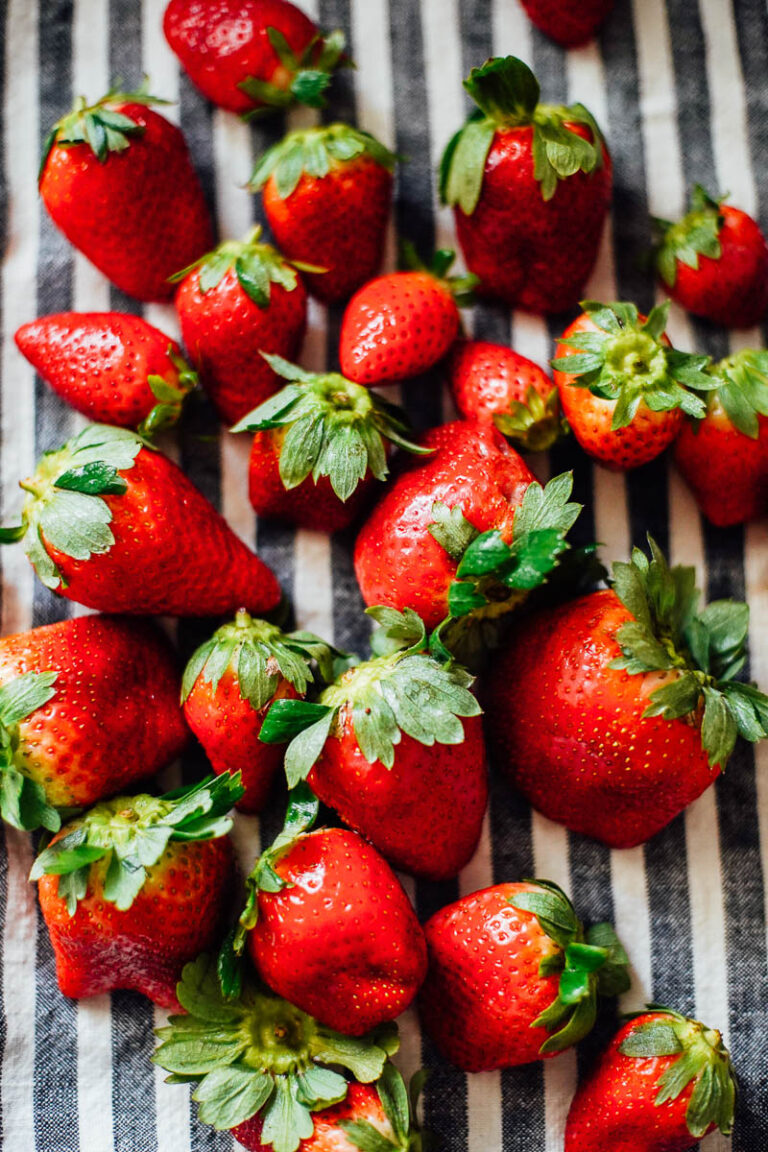
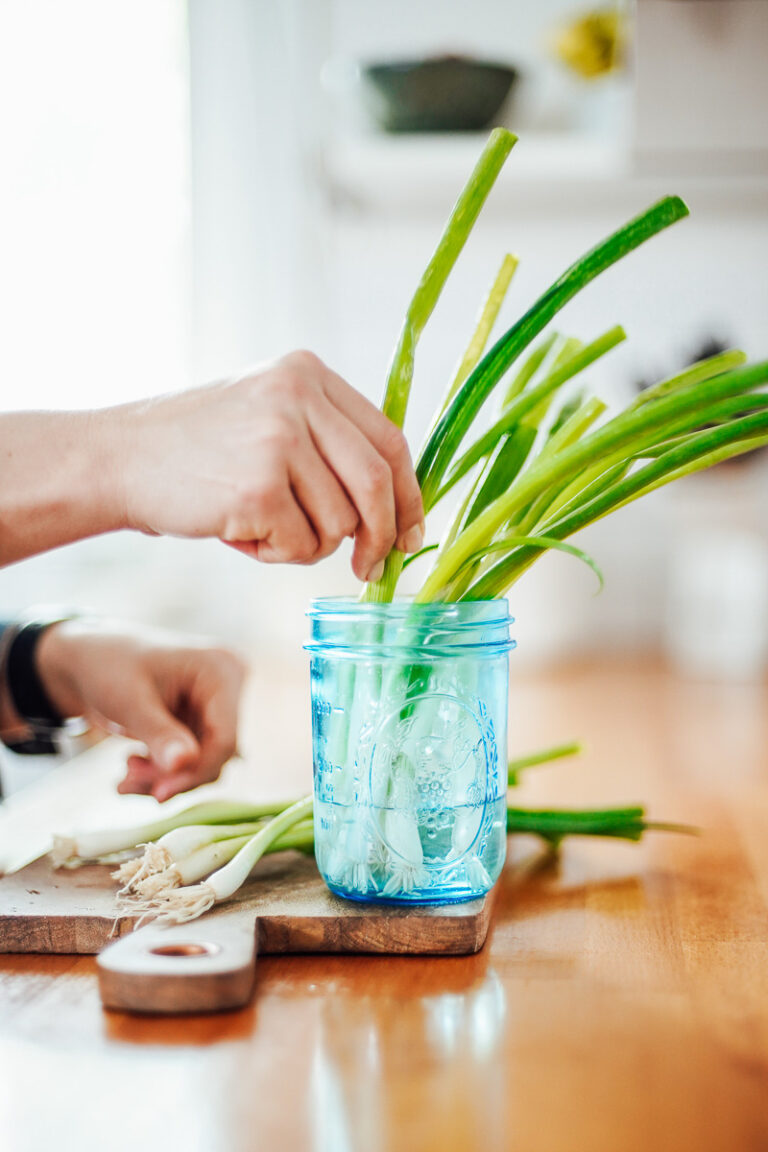
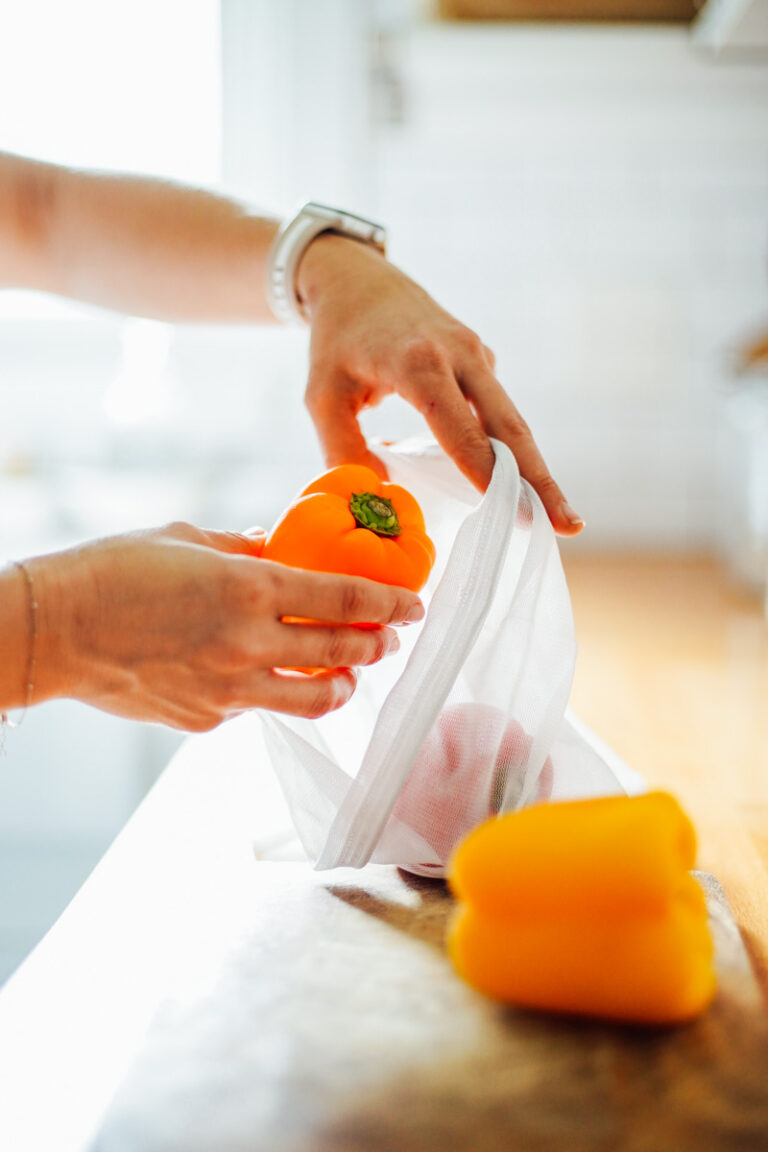
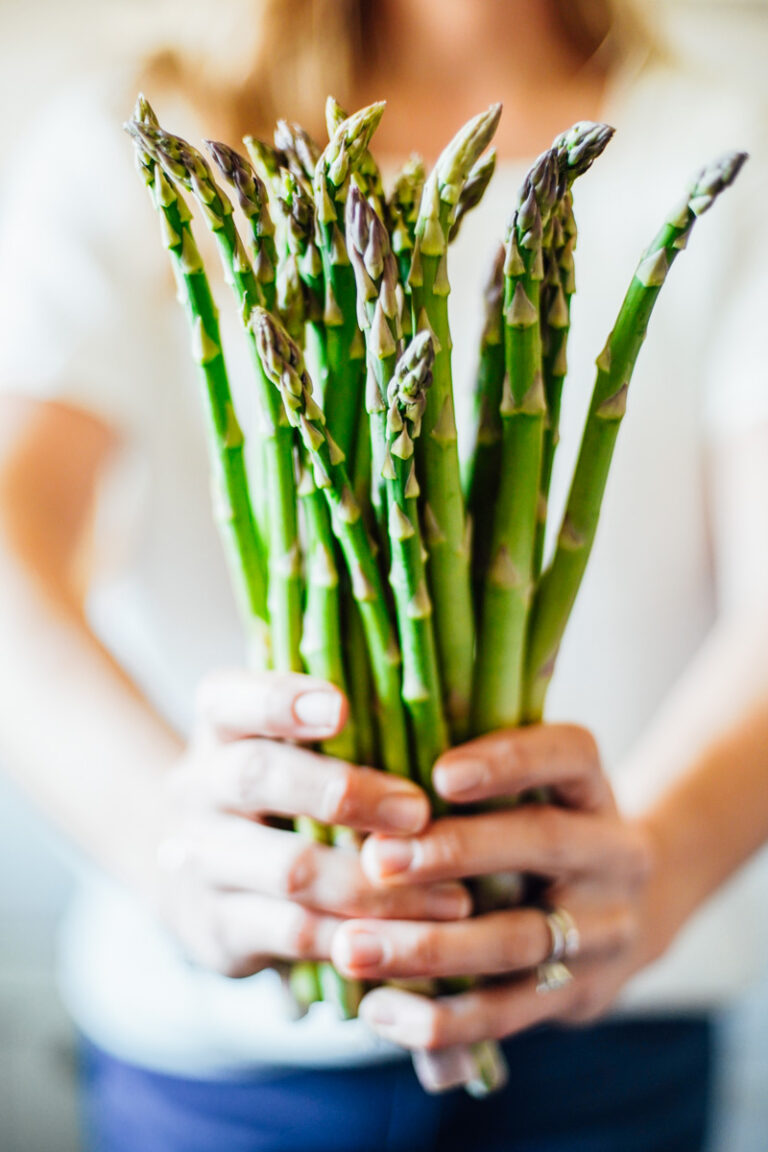
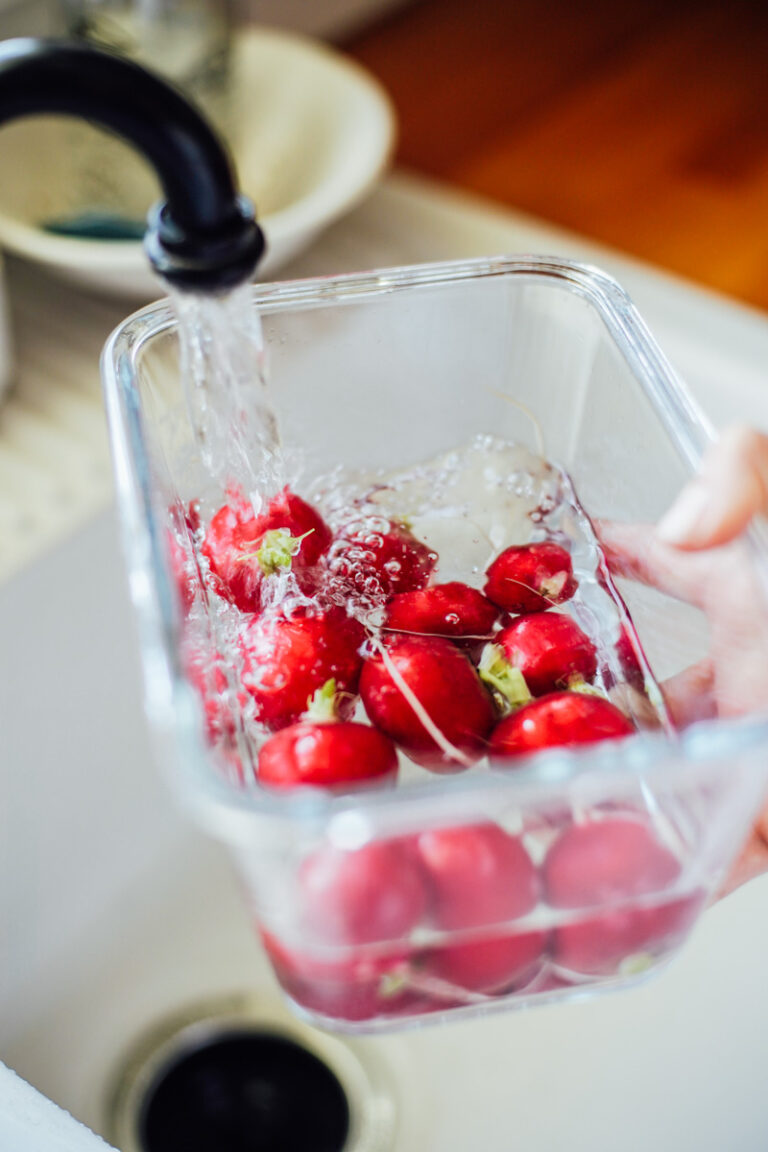
Useful. Can I put carrots in a mason jar after peeling it? I’d rather have it ready to eat, is there a method?
Hey Walaa, You can use this same method with peeled or unpeeled carrots.
Would this also work with a plastic jar, like a clean peanut butter jar? My concern is a glass jar getting dropped on the floor. Thanks.
Hey Teresa, Definitely!
Thank you! I’ve already tried this in glass jars and it’s amazing how well the carrots and celery keep. I’m glad to know I can use plastic jars, since we have a ceramic tile floor in the kitchen.
Glad it’s helpful, Teresa!
Let me know if you try this trick!
Thank you for sharing this. Can you tell me how you store the apples and cucumbers that you mentioned? I would love to know about those so I can prep those ahead of time too. I want to know how long they stay fresh and how you store them:)
Hey Mariam, I squeeze lemon juice over cut apples, then place in an air-tight container in the fridge for up to 2-3 days. And for cucumber, I cut and put in an air-tight container in the fridge, but if they’re extra “wet” (depending on variety), you can place a papertowel or napkin at the bottom of the container first, then add the cucumbers over top.
I like to buy the small English cucumbers. They are usually about 4-5 inches long and you don’t need to peel them. What is the best was to store them?
If you want to store them cut, I would slice them, then place in a glass container with a papertowel at the bottom for up to 4 days.
Does the water have to be filtered?
Hey Riddy, It doesn’t need to be filtered.